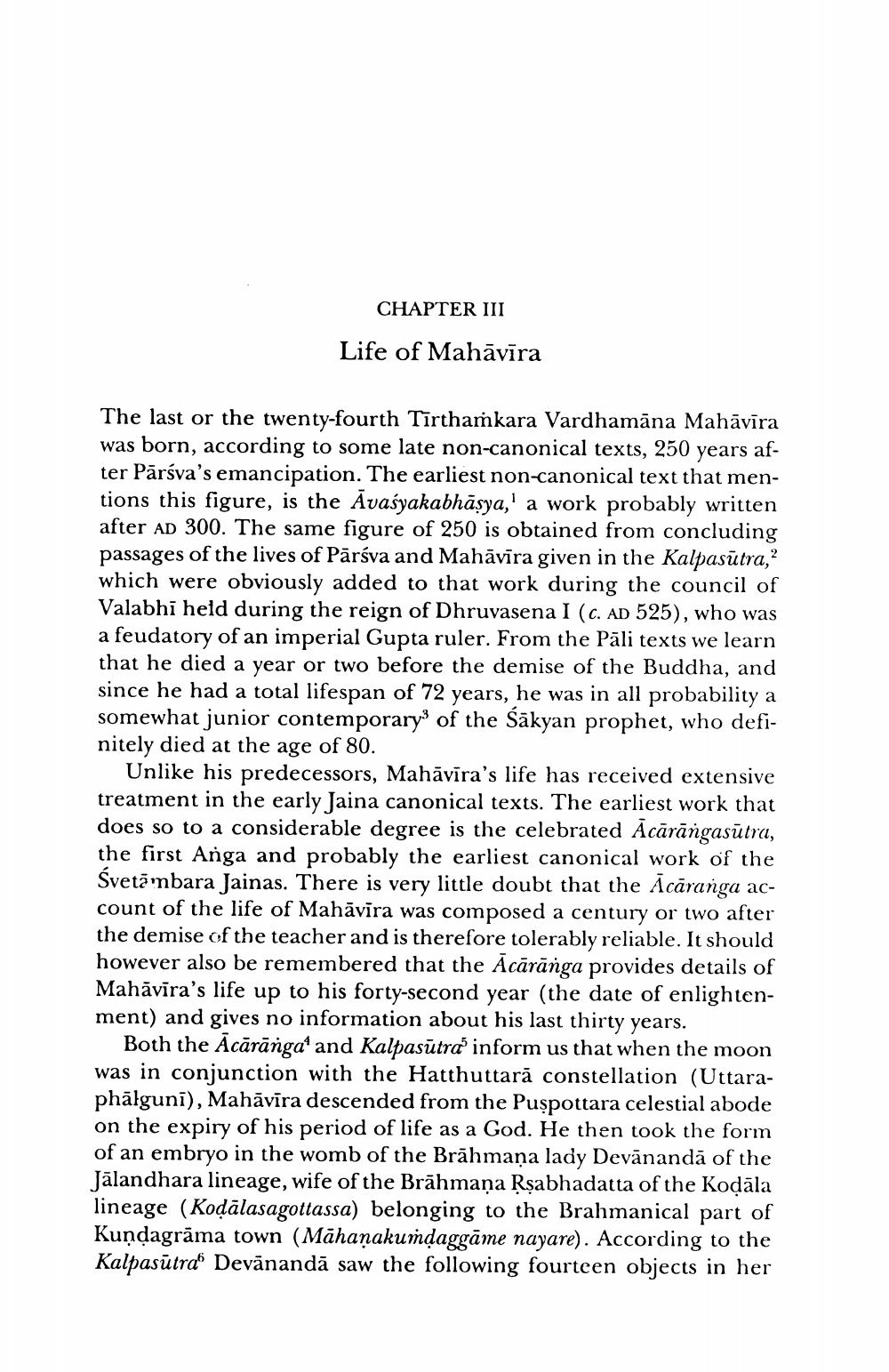________________
CHAPTER III
Life of Mahāvīra
The last or the twenty-fourth Tīrthamkara Vardhamana Mahāvīra was born, according to some late non-canonical texts, 250 years after Pārsva's emancipation. The earliest non-canonical text that mentions this figure, is the Āvasyakabhāsya,' a work probably written after ad 300. The same figure of 250 is obtained from concluding passages of the lives of Pārsva and Mahāvīra given in the Kalpasūtra,? which were obviously added to that work during the council of Valabhi held during the reign of Dhruvasena I (c. AD 525), who was a feudatory of an imperial Gupta ruler. From the Pāli texts we learn that he died a year or two before the demise of the Buddha, and since he had a total lifespan of 72 years, he was in all probability a somewhat junior contemporary of the Sākyan prophet, who definitely died at the age of 80.
Unlike his predecessors, Mahāvira's life has received extensive treatment in the early Jaina canonical texts. The earliest work that does so to a considerable degree is the celebrated Ācārāngasūtra, the first Anga and probably the earliest canonical work of the Svetārbara Jainas. There is very little doubt that the Ācāranga account of the life of Mahāvira was composed a century or two after the demise of the teacher and is therefore tolerably reliable. It should however also be remembered that the Ācārānga provides details of Mahāvīra's life up to his forty-second year (the date of enlightenment) and gives no information about his last thirty years
Both the Acārānga and Kalpasūtra inform us that when the moon was in conjunction with the Hatthuttară constellation (Uttaraphālguni), Mahāvīra descended from the Puspottara celestial abode on the expiry of his period of life as a God. He then took the form of an embryo in the womb of the Brāhmana lady Devānandā of the Jālandhara lineage, wife of the Brāhmana Rsabhadatta of the Kodāla lineage (Kodālasagottassa) belonging to the Brahmanical part of Kundagrāma town (Māhanakumdaggāme nayare). According to the Kalpasūtra Devānandā saw the following fourteen objects in her




